In the mid-twentieth century, doctors and biologists proved that constantly performing a certain set of movements in a special rhythm helps people not only get rid of diseases, but also improve their “fighting spirit.” This is how general therapeutic rhythms arose first, and then specialized rhythms, among which was speech therapy. A complex consisting of music, movements, and speech helps children speak smoothly and beautifully, and sometimes even helps them cope with the child’s stuttering problem.
Why are such exercises needed?
Human speech is a complex process that requires coordinated work nervous system, breathing, muscular apparatus in the oral cavity. If there is a violation in any component of this system, the entire mechanism, as a rule, falls apart. Logorhythmics helps strengthen these connections and achieve coordinated work in the speech process.
Also, speech therapy rhythm promotes the development of general and fine motor skills, speech breathing and coordination of movements, and also normalizes muscle tone. During logorhythmics classes, memory is trained, auditory perception and attention of children improves, which has a positive effect on physical condition helps the child develop correct movement skills.
In recent years, physiologists have noticed that regular speech therapy rhythm classes have a beneficial effect on the emotional and mental state of children. At the same time, children who are restless and easily excitable become calmer; slow and thoughtful children, on the contrary, become more active.
Who needs logorhythmics classes?
First of all, logorhythmics is needed:
- children with developed stuttering or a predisposition to it;
- children with speech that is too slow, fast or choppy;
- children with poorly developed coordination and motor skills;
- children who have been diagnosed with delayed speech development, dysarthria, and disturbances in the pronunciation of certain sounds;
- weakened and often ill children;
- children 3-4 years old who are going through a period of intensive speech formation.
Where to study with your child at home or in a group?

Logorhythmics classes can be organized in groups, at medical centers, children's clinics or kindergartens. Naturally, it will be easier for a child to learn with a group of peers, and he will have more opportunities to play and have fun in a group. However, it has been proven that individual training at home brings best results. At home, parents themselves determine what, how and when the child will do.
But this also has its own negative side, in a familiar environment, a child may refuse to complete tasks, and parents often do not have enough teaching experience to get the child to study. And yet, many adherents of the idea of logorhythmics are sure that it is better to start practicing logorhythmics at home. The child can learn to listen to music and master basic movements in a calm environment. After this, he can already be sent to a group with a professional teacher.
Exercises and rules on how to exercise with a child
A feature of any rhythm, not excluding speech therapy, is the unique simplicity of the technique. Any of the existing tasks can be performed without any problems by a person who does not have special training.
- Each exercise is based on imitation: the child repeats what the adult shows. There is no need to memorize all the speech material. This gradually comes on its own, from one activity to another. At the beginning, the text is read by an adult; at this time, the child is only encouraged to repeat. Subsequently, the child also gets involved in reading. When he can repeat all the phrases in the correct rhythm without errors, you can give the reins of power into his hands.
- Logorhythmics classes should not be held more than twice a week. The optimal time for them is the second half of the day. Don't expect anything from classes quick effect, the results will become noticeable only after six months, and in some children even after a year. Children who stutter need to study more often, up to four times a week.
- During classes, the child must be involved so that he is interested. To do this, you can use different pictures, favorite toys, bright clothes and any objects that bring joy to your child.
- All exercises must be repeated many times in each lesson until the child masters them completely. If some exercise is not amenable to your baby, then it is better to give it up for a while and then return to it again.
- Any logorhythmics exercise is impossible without music. It is necessary to select melodies for each type of activity. Slow and calm exercises are good to perform to the music of a waltz. The waltz from the ballet “The Nutcracker” is perfect. For more active exercises, marches are suitable, and for the most rhythmic exercises, you can use, for example, “Flight of the Bumblebee.” You can also prepare children's songs and recordings with sounds of nature.
- Classes should have a flexible structure and adapt to each child. When something doesn’t quite work out, you need to simplify the task or break it into several parts. If you notice that your child is having difficulty with fine motor skills or sound pronunciation, you can increase the number of appropriate exercises. Experiment without fear. The main thing when performing exercises is to maintain the unity of music, speech and movement. In all other respects, the flight of your imagination is not limited.
- There is no need to be upset, let alone angry, when your child doesn’t do everything the way you want. If the child feels your dissatisfaction, he will withdraw and may refuse to do the exercises. You need to be patient and continue what you started, even if you yourself do not believe in your child’s success.
From 0 to 2.5 years
Logorhythmics classes can be started from early childhood. Until the age of two, the child will engage in passive activities. Mom can simply read rhymes and sing songs to her baby, while beating a rhythm with her palms. Later baby He will already be able to perform some exercises, clap to the beat of poetry, raise his hands when he hears a certain word.
From 2.5 to 4 years
At this time, the child improves his motor skills, he learns to communicate and speak - this is what needs to be done during logorhythmics lessons. Important! If your child can still speak in complete sentences, you can allow him to repeat after you the last words of spoken phrases or just the endings of words.
Video: lesson on logorhythmics in kindergarten.
The task of adults is to help children master speech. To do this, it is necessary to pay attention to speech therapy and logorhythmic classes. Thanks to them, the child replenishes vocabulary, learns to pronounce sounds correctly, choose intonation and form sentences.
From the article you will learn what logorhythmics is, what exercises it includes, what its age purpose is. This technique is becoming popular as it helps many children quickly master speech.
What is logorhythmics?
To prevent a child from having problems with speech, teachers use different methods. One of them is logorhythmics. Thanks to her, children replenish their vocabulary, develop both fine and gross motor skills, and learn correct pronunciation and much more.
Logorhythmics is a set of exercises that a child performs with the help of music and poetry. This is correctional pedagogy, thanks to which movements are accompanied by sound.
In fact, this technique is called “speech therapy rhythm.” Teachers do it with children to correct speech with the help of movements and sound. These exercises are very useful for children. They develop breathing, speech, hearing, motor skills, creativity.
Logorhythmics is very necessary for children 5-6 years old. The exercises are designed to help your child cope with speech difficulties faster. At this age, children are being prepared for school, so they need to speak correctly and clearly, since academic performance also depends on speech skills.
The purpose of logorhythmic exercises for preschoolers
To overcome speech development problems, it is necessary to conduct rhythmic exercises. For each exercise, teachers set a specific goal. Children learn to talk, improve their speech, strengthen their muscles, form correct posture, develop breathing and much more.
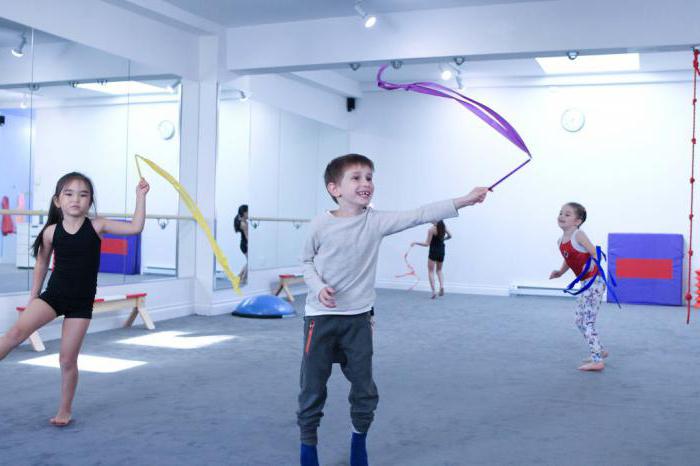
Thanks to rhythmic exercises, the child begins to feel the tempo of the music, move to the beat, sing, etc. Logorhythmics is useful for children 5-6 years old. The exercises for them are more complex, since before school they need to know much more than at the age of 3-4 years.
Logorhythmic classes are needed not only for speech development. Thanks to them, you can calm an overly active child or cheer up a calm one. With the help of logorhythmics, children learn to transform and enter into the image of a theatrical hero.
Relevance
Today this technique is in great demand. Exercises can be performed not only in a group, but also at home. Adults help children develop in accordance with their age. Logorhythmic exercises are very useful for every child. They comprehensively develop children and improve their speech.
Logorhythmics teaches children to thoroughly master motor skills and navigate in space. How older child, the more he understands the meaning of classes, and can express himself creatively.
Regular logarithmic exercises help improve your health. The cardiovascular system, respiratory, motor, cognitive, etc. work better. Thanks to such activities, children are in a better mood for the whole day.
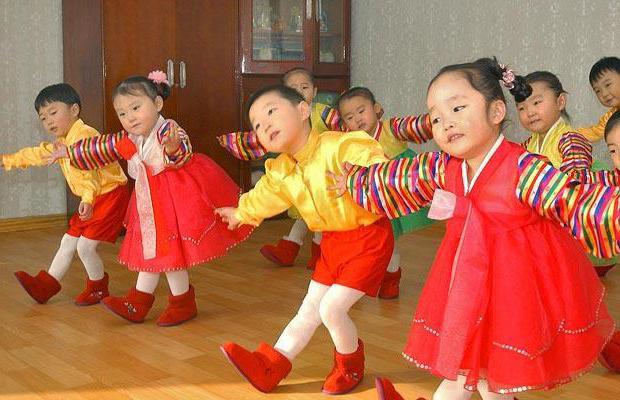
Logorhythmics is popular for children 5-6 years old. Exercises for them are created not only with music and movements, but also with more complex words to consolidate the development of speech. Before school, children must speak well and know a lot of words. Then they will easily learn to read and write.
What does logorhythmics include?
As mentioned earlier, musical and movement exercises are necessary for every child. Logorhythmics includes:
- Walk forward, backward, left or right. Thanks to such exercises, the child learns to navigate in space.
- Breathing, voice, articulation, intonation. This helps children speak correctly, choose words, and feel tact.
- Regulating muscle tone and attention.
- Speech exercises both with and without musical accompaniment.
- Development of fine and gross motor skills.
- Development of musical tact.
The principle of all logorhythmic exercises is the use of rhythm and music. Therefore, there is a chance to diversify the movements. Accordingly, children do not get bored with logorhythmic exercises, because every child is ready to jump and run all day long.
Sometimes kids are given difficult tasks. Logorhythmics is especially difficult for children 5-6 years old. They organize exercises with musical accompaniment, movement and words. Not every child will learn this easily.
Classes always begin with walking or marching. Thanks to this, the coordination of hands and feet is clear. It is from walking that children learn to control their body and become more stable.
Development of attention, memory and musical sense
Many children do not know how to concentrate on one thing. They are inattentive, forgetful, their memory is unstable, and they cannot sing to music because they do not have the appropriate hearing. For such kids, logorhythmic exercises are needed, which require attention, memory and hearing.
To develop a musical sense, children are first offered tasks with a slow rhythm. Kids should feel every sound in the music.
Pace is speed. In music it is divided into slow, moderate and fast. So that the child can feel the music, there is no need to rush. First, with children, they stop at a slow pace. When it is mastered, you can move on to faster music.
Musical instruments are an integral attribute in logorhythmics
As a rule, children love it when it is noisy and fun. Therefore, musical instruments are of no small importance in logorhythmics.
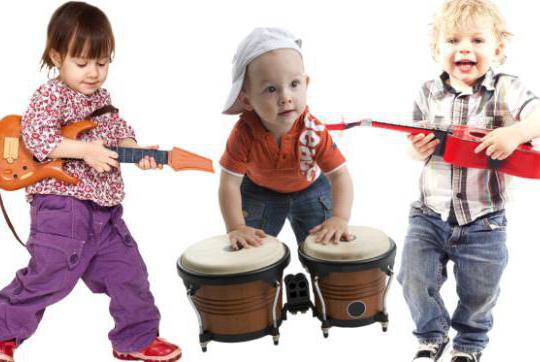
Thanks to them, children learn to feel rhythm, they develop hearing, attention and memory. Plus, it’s developing fine motor skills which improves speech.
Musical instruments develop imagination and creativity. When the teacher or music director begins to play the piano, the children must repeat at least the tempo. It rarely works the first time. However, if a child strives for improvement, sooner or later he will definitely succeed.
Logorhythmics for children 4-5 years old
Many teachers pay attention to rhythmic education. Logorhythmics is very interesting for children 4-5 years old. Exercises last a maximum of 30 minutes. These can be finger games or outdoor games. Thanks to them, the child’s speech develops.
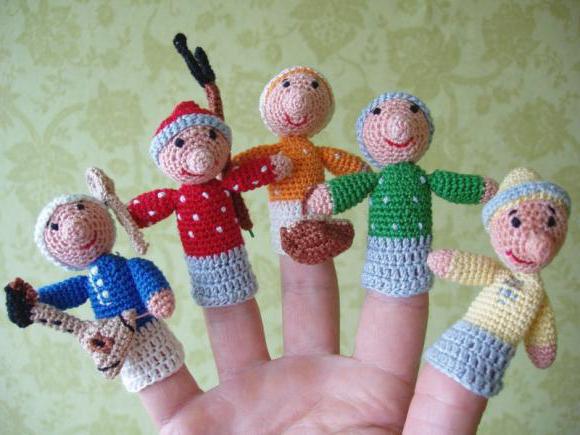
Finger game
Educator: Children, look at your fingers. How many are there on your right hand? And on the left? That's right, 5 fingers. Let's play with them.
We shared a tangerine ( left fist held by right hand).
There are many animals, but he is alone.
This slice is for kittens ( extend the first big toe),
This slice is for ducklings ( extend the index finger),
This slice is for piglets ( extend the middle finger),
The chickens will eat this one ( extend the ring finger),
The rest of the slices are for little kids ( extend the little finger).
Outdoor game
We ran, we ran until our legs were tired.
Now we’ll rest a little, and then we’ll start running again.
Oh! Children, look out the window, it’s starting to rain.
It's time for everyone to quickly run home.
Let's put on beautiful rubber boots on our feet,
Let's go for a walk again, catch up with the lovely rain.
These exercises for children 4-5 years old develop attention. Such games must be played regularly. Preferably with musical accompaniment.
Logorhythmics for children 5-6 years old
At this age, the exercises are more complex. Children need to master not only movements, but also rhythm, words, music.
Movement exercise
A fly agaric mushroom grew under the hillock,
The children saw it and decided to dig.
They began to knock him down with a shovel.
We dug for one day
The second day they chopped
The third one was sawed.
Hooray! The mushroom was dumped on the ground!
In this exercise, children must figure out for themselves what movements they need to do. However, adults for the first time can help. Once children have learned the poem, they can retell it on their own.
One more exercise
The breeze is blowing, the leaves are spinning,
Slowly but surely they sank to the ground.
A strong wind blew, snowflakes flew in,
There will probably be snowstorms soon.
The wind suddenly blew again, and there was a snowball on the ground.
Snow is everywhere, and on a tree, in a hollow,
On the ground and on the asphalt,
After all, winter has come, imagine!
Logorhythmics for children 5 years old is very entertaining. The kids will be happy to come up with movements and show them.
Logorhythmics for children 6-7 years old
Exercises for this age may no longer last 30, but 40 minutes. Children need to allocate more time for classes, as their complexity increases.
Movement exercise
Let's go to the forest with the guys (marching in a circle),
And we'll pick mushrooms,
In the meantime, we'll sing a song.
I'll go to the forest with my friends ( walking),
And I'll pick mushrooms ( forward bends).
The rain passed like a drip, drip,
And I didn’t bypass the mushrooms,
Now they have grown up
We will collect them.
For this rhyme, let the children come up with their own movements. After all, they develop not only memory, but also imagination. Logorhythmics is fun and exciting for children 6-7 years old. Exercises are most often offered with musical accompaniment. Just what every child needs.
Exercises at home
To overcome this in a child, it is not necessary to see a speech therapist. It can also be done at home. Many children speak too quickly. This negatively affects speech. Thanks to logorhythmic exercises, you will teach your child to speak clearly.

It is easier and more fun for kids to study with peers. However, it is not always possible to take your baby to a group. Therefore, conduct classes at home. It's not as difficult as it seems.
There is a unique logorhythm for children 5-7 years old. Classes and exercises are based only on fairy tales or songs. It's fun, interesting and entertaining for every child. Many children ask their parents to read another fairy tale. You can take advantage of the situation. When you tell a fairy tale, accompany it with movements, intonation, and facial expressions. Children always copy adults, so after the first reading, the child will show and tell you another fairy tale. Sing songs with your child in the same way.
Conclusion
Exercises for children on logorhythmics can be varied - both the easiest and most complex. In the younger group, poems by Agnia Barto are suitable. For older children or preparatory groups you can tell long tales by Korney Chukovsky or Sergei Mikhalkov.
When a piece of music comes on, children must not only sing, but also dance. Try not to scold kids if they don't succeed. Remember that children are still small, and many movements are difficult for them.
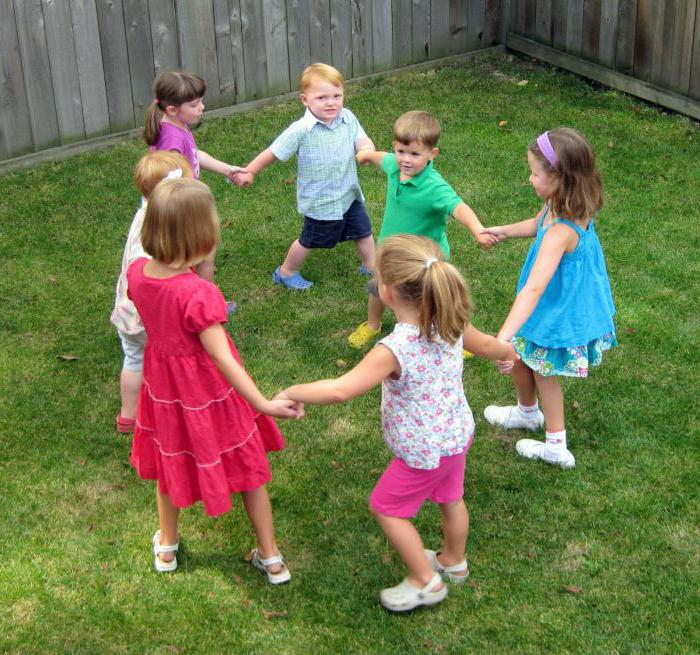
To ensure that children enjoy doing the exercises, include backing tracks as often as possible. Even exercises should be done with music. Then the children do the exercises with pleasure.
Dance movements help you relax, feel the rhythm, pause, silence or the end of a piece of music. Add your imagination and love for kids, and you can transform activities into rich, effective games, and children will look forward to them with pleasure.
It has long been noted that movement improves our lives. If you are tired, do some exercises and you will feel cheerful and energized. If you feel nervous exhaustion, go for a run or walk in the park, and a general calm will immediately set in.
Movement is life! Many speech therapists argue that if physical activity accompany children's speech or singing, the latter can be easily improved. This direction in speech therapy is called logorhythmics (speech therapy rhythm).
Logorhythmics exercises are also very useful for physical development, they improve intellectual abilities, produce a positive effect on the production of the speech apparatus.
At the same time, muscles, a sense of balance, and endurance are trained, the baby learns to quickly switch from one type of activity to another, and correct posture is formed, since logorhythmics classes help improve it.
The main purpose of speech therapy rhythm is to improve speech. Logorhythmics exercises for children from 4 years old contribute to the formation of correct breathing at the moment of pronouncing sounds, and a sense of rhythm develops. The baby learns to transform and move at a chosen pace, which helps him develop his creative skills and abilities.
Logorhythmics can calm down and, on the contrary, stir up the slow. This is another plus from such activities. The exercises have no age restrictions. Even rhythmically walking with a newborn baby in your arms and reciting a poem at the same time will already be considered an exercise in speech therapy rhythms.
The purpose of such exercises for children under 6 years of age is to solve possible problems with speech development, as well as to overcome difficulties that are not related to non-speech functions of a mental nature.
Why does logorhythmics help overcome barriers in a child’s speaking abilities? The speech apparatus is closely related to the child’s activity: the higher it is, the faster the ability to speak is mastered.
The relevance of logorhythmics today
Techniques are very fashionable today early development kids. Most parents are interested in them. The main direction in this development is aimed at the intellectual growth of the child.
Parents, starting from the cradle, introduce him to numbers and letters. This leads to the fact that the brain is distracted by the formation of centers responsible for writing, reading and counting skills. At the same time, the psychomotor capabilities of the brain are not sufficiently developed, and it is almost impossible to replenish them in the future.

This does not mean that early development methods are harmful or unsafe. They have the right to be, but at the same time, parents should not forget about the need to introduce speech therapy rhythm exercises into classes with their child.
By spending it at home or in kindergarten, you allow your baby to develop harmoniously in accordance with his age.
Where to conduct classes
In order to work with your child, it is not necessary to conduct lessons only with a speech therapist. The good thing about logorhythmics is that it can be easily applied at home.
You still need to consult with a speech therapist in order to know exactly how to guide and what to pay attention to if the baby really has serious disorders in speech development.
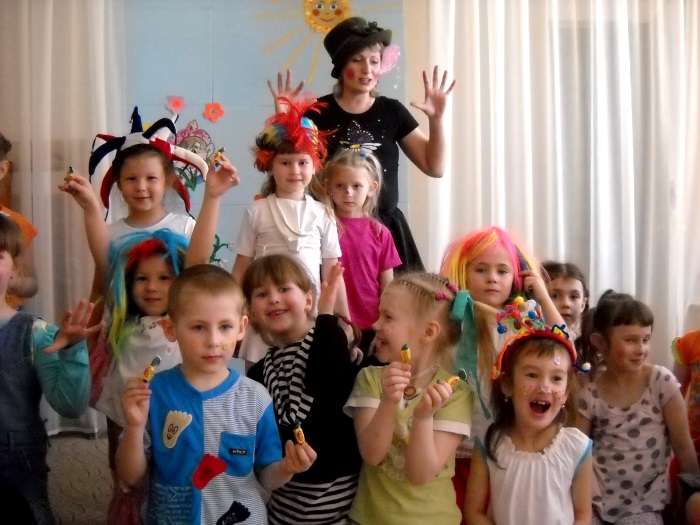
If it is possible to conduct classes with a speech therapist or in a group of children, then this is also good. It is much more interesting for a child to repeat exercises together with other children, and this is additional socialization for the child.
Speech therapy rhythms for 2–3 year old children
The vocabulary of children at this age is quite wide. During the period of 2–3 years speech development walks with giant strides. They learn quickly and grasp any material.
Speech therapy rhythm classes are aimed at stimulating the correct development of the speech apparatus and the formation of coherent speech. Exercises for children 2–3 years old should be cheerful and fun, arouse interest in children and a desire to do them again.
- Marching. One of the first exercises, the main task of which is to teach coordination of movements of the baby’s limbs. These exercises help you understand the concepts of “left” and “right.”
- Articulation. The basis of these classes is correct breathing and voice. All attention is directed to the expressiveness of speech, the height and strength of the baby’s voice. Such classes help, if necessary, to correct impure pronunciation of sounds and to correctly develop the muscle group of the speech apparatus.
The texts of the poems that are used in the classroom contain the necessary sounds that are needed for development during this particular period.
- Check. It implies the repetition of a number series in a certain sequence. Such counting rhymes also help memorize the count of the first ten.
- Attention and memory. Such logorhythmic exercises are based on verses that involve different movements to each of the lines. Children aged 2–3 years develop the ability to quickly switch from one action to another.
This is a fun speech therapy rhythm, and kids really like it, because here they can show their creativity and depict different animals and objects.
- Mimic exercises. They play a big role in the development of speech in children from 2 years of age who have problems with its development. Rhymes allow kids to make faces.
- Finger exercises. They are also called fine motor skills activities. They start with the hands, which are placed on the table and alternately change their position (palms up, on the edge).
After mastering this complex, they move on to the second stage of such exercises: repetition to a poetic rhythm. These include the well-known funny poems about ladushki or the white-sided magpie. Children love this pastime very much and take it up with pleasure.
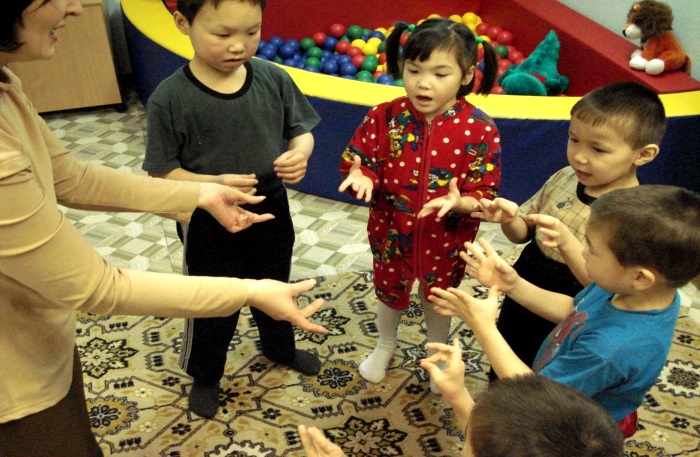
Parents can come up with their own activities, which will be performed to the music or reading of a poem. This will already be a lesson on the development of the baby’s speech.
Speech therapy rhythm for preschool age
Many teachers pay special attention specifically the rhythmic education of speech in children preschool age. Exercises from the age of 3 years can be carried out for half an hour. These are finger and mobile play complexes. How older age child, the more difficult the classes should be.
Despite its simplicity, speech therapy rhythmic classes also have a number of rules that must be followed.
- The exercise is based on repeating the movements of an adult. There is no need to learn all the speech material. In the first lessons, the adult himself recites a poem or sings a song, accompanying it with movements.
The child’s task is to repeat the movements and gradually pick up words from the text. After several such lessons, the baby himself will accurately repeat all the phrases in the required rhythm.
- Speech therapy rhythmics– these are activities that should not be carried out every day. Twice a week is enough. For children who stutter, classes should be held up to 4 times a week. The best time is the second half of the day.
- Try to involve children in the activity. They should be interested. Involve your favorite toys, bright clothes, pictures, and all family members in your work. You should not start if the baby is not in the mood. Choose a convenient time for your baby.
- All exercises are repeated several times until the children fully master them. It is necessary to select the right musical accompaniment.
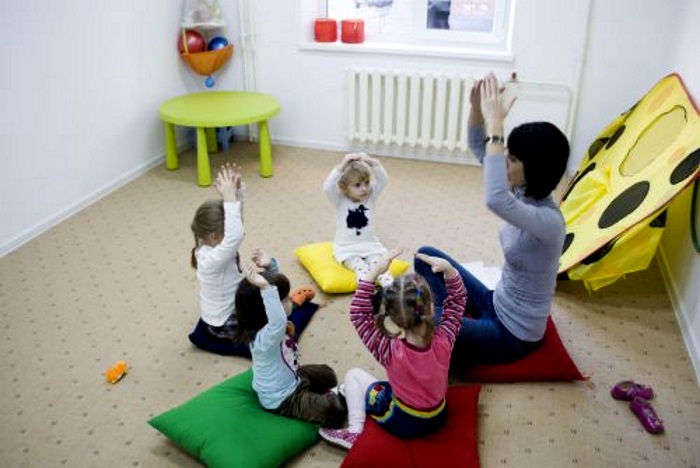
- Classes have a flexible structure, you need to adapt to the child. If something doesn’t work out or is difficult for the child, then the task needs to be simplified.
And vice versa, if difficulties arise in pronouncing a particular sound, then it is better to pay more attention to these exercises. Don't be afraid, experiment. It is important to observe the main characteristic - the unity of music, movement and speech.
Logorhythmics for children from 3 years old includes the following elements of exercises:
- walking with changes in direction;
- on the development of breathing, voice and articulation;
- by singing;
- on the development of the speech apparatus;
- for the development of fine motor skills.
Speech therapy classes should be varied: both easy and complex, and they should be selected in accordance with age. So, for lessons with a 2-3 year old child, you can use the poems of Agnia Barto. They are easy to understand and learn. For children starting from 5 years old, the poems of Korney Chukovsky are ideal.
You must understand that there may not be a quick effect from such activities. It is important to be patient and practice constantly. The first results will be noticeable even after six months or a year. Don't get angry or upset if your baby doesn't succeed.
He is small and just learning, praise and be proud of his achievements. If a child feels your dissatisfaction, he will withdraw and categorically will not want to continue classes. You, as the person closest to him, must believe in the success of your child.
We have all known for a long time that movements can partially replace psychotherapeutic effects. Fatigue, nervous tension, loss of strength can and should be “treated” with movements. And if music, singing and words are added to the movements, the healing effect is multiplied. Logorhythmics combines rhythm, sounds (words), and movements.
What does logorhythmics mean? Characteristics and features
Many modern preschoolers are diagnosed with simultaneous delays in both speech and motor skills, two components that are closely related to each other. Logorhythmics, or speech therapy rhythmics, is one of the methods for eliminating speech disorders, combining movements, words and musical rhythm.
You can practice it from birth, because walking around the room with a baby in your arms while reading a nursery rhyme or listening to your mother singing a lullaby is nothing more than logarithmics. Beautiful, correct speech is the result of fine coordination of the respiratory and nervous systems, articulation and hearing organs. If at least one of these components fails, you will no longer get an impressive result.
The main task of logorhythmic gymnastics – stimulate lagging components and establish their coordinated work.
Who benefits from logorhythmic exercises:
- Children with general speech underdevelopment.
- Children whose speech is intensively developing (2.5-4 years).
- Weakened, often sick children.
- For dysarthria and dyslalia (sound pronunciation disorders).
- Children with a predisposition to stuttering and children who stutter.
- For hesitations in speech, as well as for children with tachylalia and bradyllalia (with speech that is too fast or too slow).
Logorhythmics develops not only speech, but also mental processes, stimulates physical development. Games for the formation of phonemic hearing, speech breathing, articulation, and rhythm serve to develop speech. More often than not, the same exercises achieve several goals at the same time.
The main feature of logorhythmic exercises is that almost all of them are accompanied by music or singing. Music has a strong emotional impact on a child’s psyche, adds a special flavor and helps make exercises more varied.
Speech therapy rhythm is:
- Various types of walking with complications.
- Breathing and articulation gymnastics.
- Speech development exercises without music.
- Exercises that develop fine motor skills.
- Singing.
- Exercises to focus on attention and regulate muscle tone.
Exercises that require coordination of attention simultaneously develop all types of memory: kinesthetic (motor), musical, auditory, speech, visual.
How does logarithmics affect the development of a 3-4 year old child?
Children who practice logorhythmics are more graceful, rhythmic, and able to move expressively, sing and speak. If the unity of all components is observed, positive changes will not be long in coming.
The influence of classes on children's development:
- The child learns to make the correct speech exhalation.
- An ear for music develops.
- Children become more dexterous, large and fine motor skills improve.
- Overly active kids calm down, become more diligent, and slow children become cheerful and active.
- Articulatory motor skills develop, and the pronunciation of sounds becomes clearer.
- Strength, agility and endurance are formed, children acquire beautiful posture.
These classes are especially important during the period of speech development, when any delay in speech development entails consequences that are difficult to eliminate.
How are logorhythmics classes conducted with children 3-4 years old?
All logorhythmic exercises for children 3-4 years old are very simple and interesting; special training is not required to perform them. The adult shows and the child repeats after him. Children are not required to memorize and memorize the material; everything happens spontaneously. At first, a little help from an adult is required, but after a few lessons the kids can independently and accurately repeat the speech material.
In the video of the presentation of the song - a dramatization of the famous early childhood development teacher Zheleznova E.S.:
For a visible effect, you need to practice for at least 6-12 months, regularly conducting 2 classes per week. It is better to do this after a nap, although it all depends individual characteristics child. Children with stuttering and hesitation should practice logorhythmics at least 3-4 times a week.
Before conducting the classes, a little preparation is required - for each stage of the classes you need to select the appropriate soundtrack. It could be classics, children's songs, relaxation music, sounds of nature.
It is impossible to use a strictly defined lesson program; all lessons are adjusted to a specific child. If there are problems with motor skills - the proportion of corresponding exercises increases, sound pronunciation suffers the most - more time should be devoted to finger and articulatory gymnastics.
In no case should a child be scolded for failures, so that he does not lose interest in classes. It is better to abandon an unmastered exercise for a while, but then you still need to return to it.
Logorhythmic games and exercises for children 3-4 years old
For individual lessons, you can choose the material yourself, or use ready-made programs. The main thing is that the structure of the lesson includes the required components, and, if necessary, the exercises are accompanied by music.
Logorhythmic games:
- Breathing exercises
We blow the cotton wool from the palm of our hand and blow it on paper snowflakes, blow off a piece of paper glued to the tip of the nose, blow on paper boats in a basin, blowing soap bubbles.
- Sing vowels
We pull the bright colored string from the fist and sing the vowel sound as long as it stretches.
- Game "Earth, water, air"
When an adult says the word “earth” we stomp our feet, when we hear the word “water” we imitate swimming, when we hear the word “air” we wave our arms above our heads.
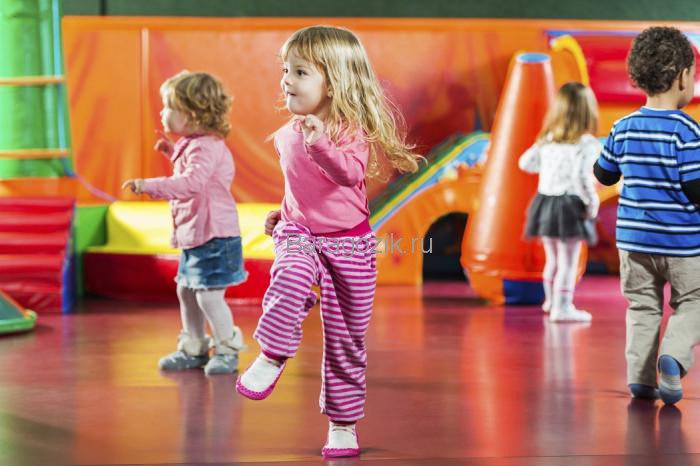
- Game "We Raise Our Hands"
We raise our hands, we lower our hands, we shake our heads.
We stamp our feet, we clap our hands, we give them to mom,
And let's run!
- "Funny Parrots"
Invite the children to tap with the edge of their palm the rhythm of the syllable series proposed by the adults: ta-ta-ta, ta-ta, ta-ta, ta-ta-ta, like parrots repeating each word.
- Simulation of playing musical instruments
“We came and sat down, playing the trumpet - Tu-tu-tu! Doo-doo-doo!” Next, we imitate playing the drum, rattles, balalaika, etc. You can use children's toy tools.
Video - the plot of a lesson on logorhythmics with children 4-5 years old:
Fun and varied activities will not bore the baby, and adults will be able to achieve an important goal in a relaxed manner - to develop correct, rich and beautiful children's speech.
Natalya Shutova
“Logoritmics for children 2–3 years old”
Numerous studies psychologists and linguists show that the rate of speech development at the beginning of a child’s life is much higher than in all subsequent periods of life. So, by approximately 12 months, vocabulary baby averages 8 - 10 words, and at 3 years it expands to 1000 words! In the third year of life, speech development becomes a leading trend. The child not only expands his vocabulary, but also learns to construct sentences.
Between the ages of 2 and 3 years there is a significant leap in speech development. Children who have not received early age corresponding speech development are noticeably delayed in general development. That is why it is recommended to conduct classes with them on logorhythmics.
What's happened logorhythmics?
This is a cocktail of movements, speech and music.
Purpose logorhythmics is to overcome speech disorders by developing the child’s motor sphere in combination with words and music. Speech therapy Rhythm is useful not only for children with speech impairments, but also for children who are just beginning to speak, that is, toddlers. In such classes they gain their first experience of communicating with peers and adults.
Tasks:
1. Create an atmosphere of celebration and joy in the classroom. Form a positive emotional mood in children.
2. Develop musical abilities. Teach children simple dances and playing children's musical instruments.
3. Learn finger and outdoor games. Introduce children to the elements of self-massage. Develop fine and gross motor skills.
4. Learn songs and poems with children, accompanied by movements and motor exercises.
5. Develop attention and visual memory, coordination of movements.
6. Develop a sense of rhythm as you go. various types activities: musical, physical education classes, speech development, as well as during outdoor games, sedentary games, round dances, didactic.
Publications on the topic:
Program "Logoritmics for kids" WORK PROGRAM additional classes“Logoritmics for kids” for children junior group Rhythm is the movement of matter, logically and...
Logorhythmics in working with preschool children Currently, touching on any issue related to childhood problems, we all, without exception, want to see our children healthy and happy.
Abstract of the OOD Logorhythmics “Teremok” on the lexical topic “Wild Animals” for children 5–7 years old Abstract of OOD Logorhythmics “Teremok” For children of senior preschool age with general speech underdevelopment. Lexical topic “Wild animals”.



